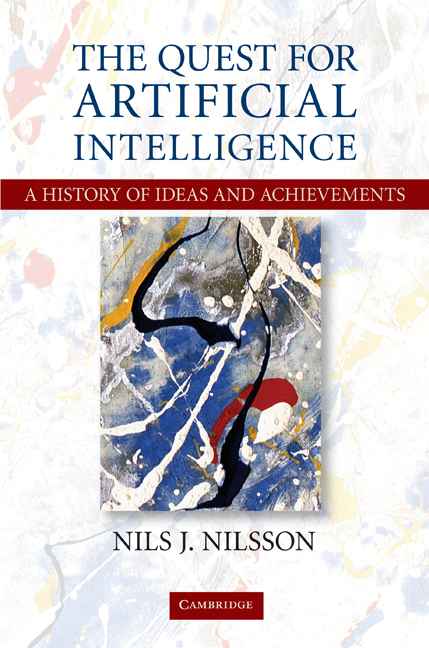| P A G E 2 |
NI News |
Pages 1 | 2 | 3 Dec 2011 |
News & Tools
|
Health IT Chiefs: Our Next IT Rock Stars?
As IT managers gradually connect medical devices to electronic health records (EHRs), the role, influence and responsibilities of chief medical informatics officers (CMIOs) and chief nursing officers (CNOs) will continue to grow "to a level not seen before," predicts a study from the Healthcare Information and Management Systems Society (HIMSS).
Among the medical devices that will likely require such integration, according to researchers, are fetal monitors, cardiac output monitors, ventilators, IV pumps, anesthesia machines, balloon pumps, and even smart beds.
Read article at Information Week - Healthcare.....
Online Holistic Wellness Health Study Shows that Cognitive Status, Physical Health and Daily Functioning are Interrelated
 NEW YORK, Dec. 15, 2011 -- PRNewswire -- A recent study "A Holistic Approach to Assess Older Adults' Wellness Using e-Health Technologies", conducted at the School of Nursing and the School of Medicine, at the University of Washington, by Dr. Hilaire Thomson and Dr. George Dimiris, and published this month in TELEMEDICINE and e-HEALTH shows that holistic wellness (cognitive, physiological, spiritual and social) can be assessed successfully in older adults using informatics applications in a sample of community-dwelling elders. NEW YORK, Dec. 15, 2011 -- PRNewswire -- A recent study "A Holistic Approach to Assess Older Adults' Wellness Using e-Health Technologies", conducted at the School of Nursing and the School of Medicine, at the University of Washington, by Dr. Hilaire Thomson and Dr. George Dimiris, and published this month in TELEMEDICINE and e-HEALTH shows that holistic wellness (cognitive, physiological, spiritual and social) can be assessed successfully in older adults using informatics applications in a sample of community-dwelling elders.
The study also reveals an association between cognitive function and physiological health as well as between cognitive abilities and activities of daily living, thus making a stronger claim for an integrated approach to the assessment of wellness and brain fitness, CogniFit reports.
Read more from PR Newswire....
|
Hot Skills for 2012
IT salaries are projected to rise by 4.5 percent in 2012, according to Robert Half International, though they've been largely flat this year by Janco Associates' figures. But Robert Half foresees bigger raises in what it calls "seven high-potential jobs."
The positions on the list are hardly a surprise. As John Reed, Robert Half executive director put it:
"A common feature of high-demand jobs is a large degree of specialization. Professionals with the best prospects have finely tuned abilities that enable their companies to take advantage of new technology and the increasing amount of information available to them."
- Read more at
IT Business Edge....
Mobile point-of-care spending to hit $4.4B by 2015
By 2015, clinical mobility should represent about 10 percent of the worldwide health IT market.
 Healthcare providers in the U.S. will spend more than $4.4 billion on mobile point-of-care technology in 2015, up from almost $2.8 billion in 2010, representing an annual growth rate of 9.9 percent, according to a new forecast from Intel and research firm IDC Health Insights. The market will expand slightly more rapidly in other Western countries. Counting North America and Europe, spending will increase by 10.5 percent a year, from $4.4 billion last year to $7.2 billion in 2015, including hardware, software and IT services. Healthcare providers in the U.S. will spend more than $4.4 billion on mobile point-of-care technology in 2015, up from almost $2.8 billion in 2010, representing an annual growth rate of 9.9 percent, according to a new forecast from Intel and research firm IDC Health Insights. The market will expand slightly more rapidly in other Western countries. Counting North America and Europe, spending will increase by 10.5 percent a year, from $4.4 billion last year to $7.2 billion in 2015, including hardware, software and IT services.
- Read more at mobihealthnews....
|
|
|
| FREE E-BOOK RECOMMENDATION |
The Quest for Artificial Intelligence |

Covers lots of historical landmark AI systems as well as modern AI applications
Nils J. Nilsson, Kumagai Professor of Engineering (Emeritus) in the Department of Computer Science at Stanford University, received his PhD degree in Electrical Engineering from Stanford in 1958. He spent twenty-three years at the Artificial Intelligence Center of SRI International working on statistical and neural-network approaches to pattern recognition, co-inventing the A* heuristic search algorithm and the STRIPS automatic planning system, directing work on the integrated mobile robot, SHAKEY, and collaborating in the development of the PROSPECTOR expert system. He has published five textbooks on artificial intelligence.
Professor Nilsson returned to Stanford in 1985 as the Chairman of the Department of Computer Science, a position he held until August 1990. Besides teaching courses on artificial intelligence and on machine learning, he has conducted research on flexible robots that are able to react to dynamic worlds, plan courses of action, and learn from experience. Professor Nilsson is a foreign member of the Royal Swedish Academy of Engineering Sciences. He is a recipient of the IEEE "Neural-Network Pioneer" award, the IJCAI "Research Excellence" award, and the AAAI "Distinguished Service" award. In August, 2011 he was inducted as one of ten members of IEEE Intelligent System's inaugural "AI Hall of Fame."
|
Introduction
Author has been working in AI for 50 years giving first-hand experience of the whole history of the subject
Artificial intelligence (AI) is a field within computer science that is attempting to build enhanced intelligence into computer systems. This book traces the history of the subject, from the early dreams of eighteenth-century (and earlier) pioneers to the more successful work of today's AI engineers. AI is becoming more and more a part of everyone's life. The technology is already embedded in face-recognizing cameras, speech-recognition software, Internet search engines, and health-care robots, among other applications. The book's many diagrams and easy-to-understand descriptions of AI programs will help the casual reader gain an understanding of how these and other AI systems actually work. Its thorough (but unobtrusive) end-of-chapter notes containing citations to important source materials will be of great use to AI scholars and researchers. This book promises to be the definitive history of a field that has captivated the imaginations of scientists, philosophers, and writers for centuries.
Nils J. Nilsson's book begins with the story of how artificial intelligence originated in 1956 at a Dartmouth summer project that had the goal of "making a machine behave in ways that would be called intelligent if a human were so behaving." It relates how in the fifty-plus years that followed, AI has been the subject of overly-optimistic predictions, academic arguments that its goals are unachievable, funding excesses, and funding droughts. But the underlying reality is that AI has contributed key components to the technology foundations that shaped the modern world, and indeed has transformed our view of machines and of our relation to them. All the major sub-fields of AI receive attention--from game playing to automatic problem solving, from computer vision to speech and language understanding, from expert systems to machine learning and probabilistic reasoning--all these and more are covered.
PURCHASE THE PRINT VERSION
FROM CAMBRIDGE PRESS
to page 3 |
|
|
|